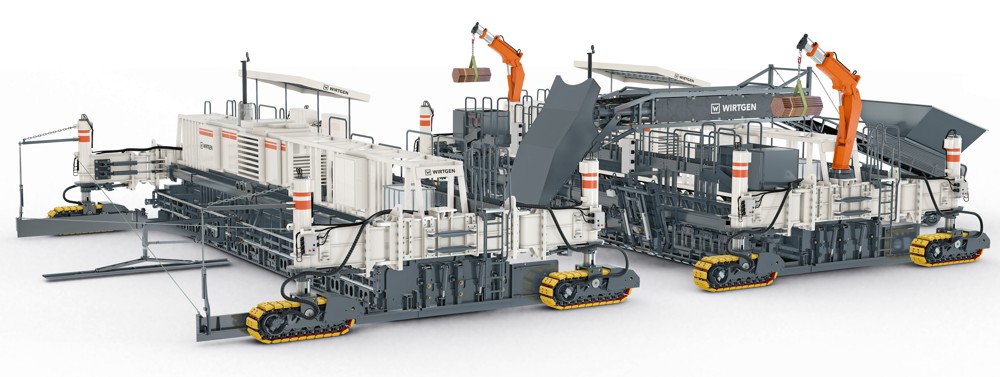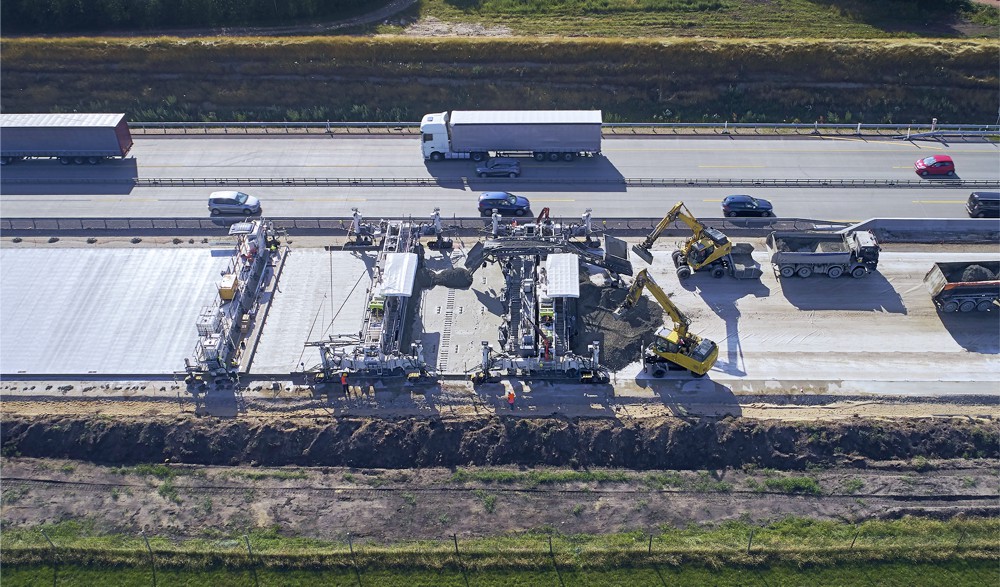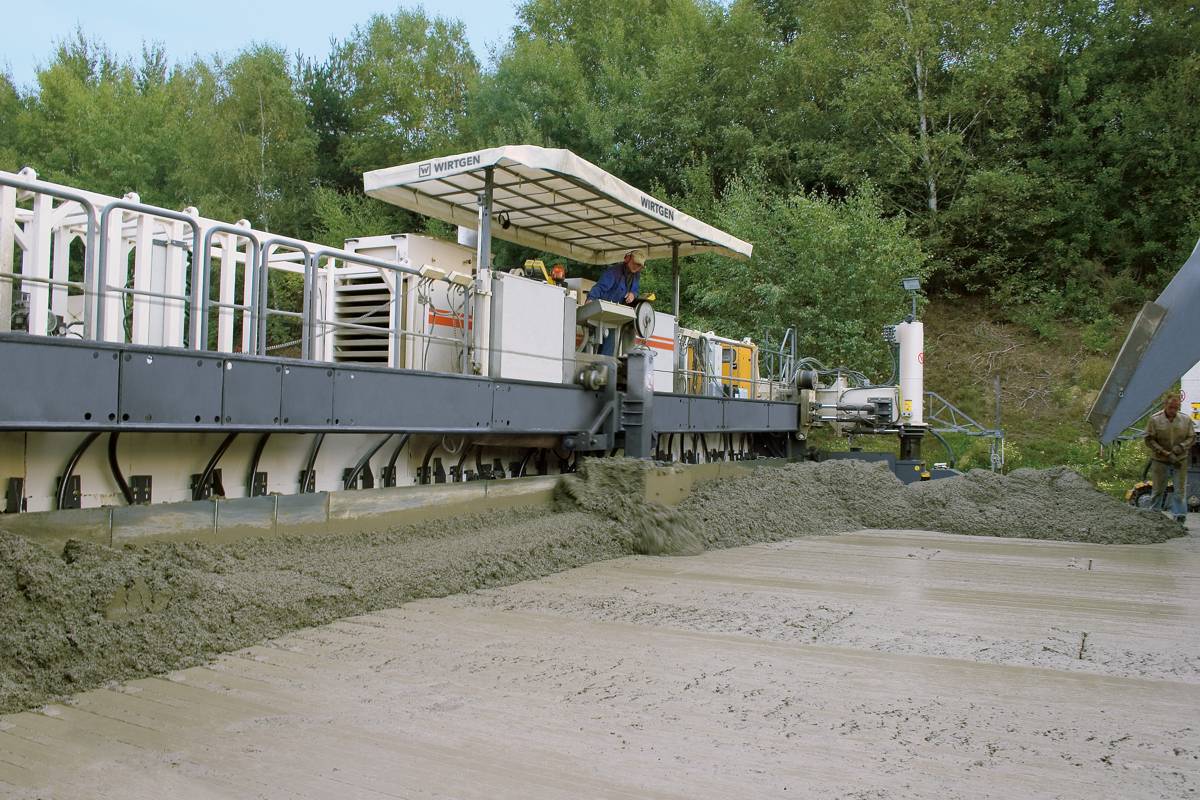Two-layer concrete highway and runway paving with a Wirtgen SP154i Slipform Paver
Wirtgen has recently released the SP 154i, updating its family of large slipform pavers. The new paver is primarily used for two-layer concrete paving on highways and airport runways. The SP 154i is replacing Wirtgen’s successful SP 1500 model.

Flexibly Configurable Concrete Paving Train
With its powerful 436 hp Cummins engine (that meets the EU Stage V/US EPA Tier 4f exhaust emission standards), the SP 154i offers ample power reserves that enable it to pave concrete surfaces up to 16 m wide and 450 mm thick.
When paving concrete in two layers, three separate machines work together to form a paving train: a bottom layer concrete paver, a top layer concrete paver, and a TCM (texture curing machine). In this process, the SP 154i can be used as either a bottom layer or top layer concrete paver.
Thanks to Wirtgen’s comprehensive range of machines in various performance classes, it’s possible to create concrete paving trains tailored to specific job requirements.

SP 154i: Top Layer and Bottom Layer Concrete Paver
As a bottom layer paver, the slipform paver is equipped with an automatic dowel bar inserter, up to three automatic side tie-bar inserters, and a concrete conveyor to the top layer paver. The heavy-duty paving mould paves the concrete true to line and level while the paver moves forward. Electric vibrators compact the concrete. Then dowels and tie bars are precisely inserted into the bottom layer concrete. The result is a homogeneous, cost-effective concrete surface that forms the ideal base for the high-quality top layer concrete.
When using the SP 154i as a top layer paver, the top layer concrete is conveyed over and across the bottom layer paver via a belt conveyor and placed on the fresh bottom layer concrete in front of the top layer paver. The top layer concrete is paved “wet on wet” and compacted with T-vibrators specially designed for top layer concrete.
The slipform paver comes standard-equipped with an oscillating beam and super smoother to produce a level surface, while the hydraulically adjustable one-piece or two-piece side plates on both sides minimize concrete loss. Specially designed trailing forms and extended side plates additionally ensure that the slipform paver can produce perfect concrete corners.

Easy Transport and Short Setup Times
The SP 154i stands out for its outstanding manoeuvrability and traction, regardless of the surface conditions, thanks to its four steerable and slewing crawler units. Making the units independent of each other makes transport easy and results in minimal assembly/disassembly effort. The SP 154i features a high degree of automation, which makes concrete paving extremely cost-effective.




















